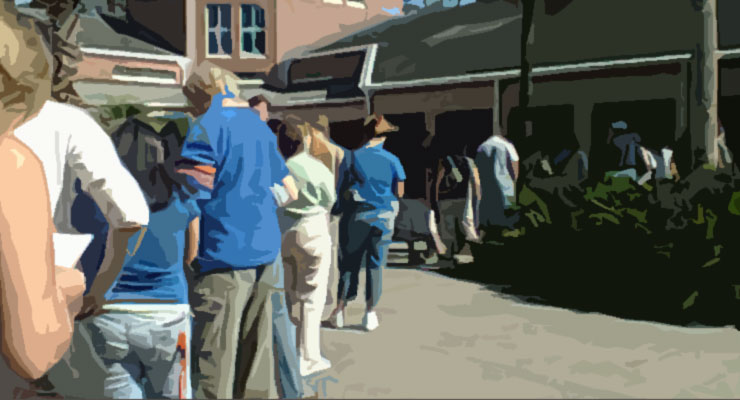
Some interesting news was posted on the Election Updates Blog, a “collaboration between Michael Alvarez, Lonna Atkeson, Paul Gronke, Thad Hall, Robert Krimmer, and Charles Stewart III” focused on “new research, analysis and commentary on election reform, voting technology, and election administration”. Election Updates Blog is based at the California Institute of Technology (Caltech). Take a look:
Readers may remember that in 2016 a consortium of researchers from across the U.S. (including Caltech) participated in a large study of polling places lines and dynamics in the November general election. The great news is that some of the results have been published in the journal Political Research Quarterly. The study is a wonderful example of how much progress has been made in developing a science of election study.
The paper, “Waiting to Vote in the 2016 Presidential Election: Evidence from a Multi-county Study”, is now available on the journal’s website. The lead author is Robert M. Stein.
Here you can see the paper abstract:
This paper is the result of a nationwide study of polling place dynamics in the 2016 presidential election. Research teams, recruited from local colleges and universities and located in twenty-eight election jurisdictions across the United States, observed and timed voters as they entered the queue at their respective polling places and then voted. We report results about four specific polling place operations and practices: the length of the check-in line, the number of voters leaving the check-in line once they have joined it, the time for a voter to check in to vote (i.e., verify voter’s identification and obtain a ballot), and the time to complete a ballot.
Long lines, waiting times, and times to vote are closely related to time of day (mornings are busiest for polling places). We found the recent adoption of photographic voter identification (ID) requirements to have a disparate effect on the time to check in among white and nonwhite polling places. In majority-white polling places, scanning a voter’s driver’s license speeds up the check-in process. In majority nonwhite polling locations, the effect of strict voter ID requirements increases time to check in, albeit modestly.
Leave a Reply